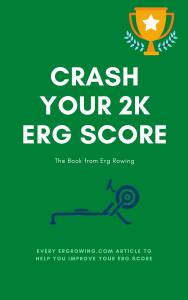Over 1 Million times a day, people search google for “correct erg footplate position” or “best foot plate on the erg”.
Ok I’m exaggerating by approximately 999,997.
But you will be surprised about how many ergers and rowers do not set the footplate position correctly on the erg.
Did you know that the correct footplate position can make a massive difference in power and technique?
And good technique = more efficient power = (life is easier! (or faster) – take your pick)
So what is the best foot plate setup?
The goal is simple. You need full length sliding and maximum power through your feet and legs.
Full length is vertical shins at the beginning of the power phase. Most people either over-compress or under-compress and neither is good. And unless you have a mirror or a good coach beside you, it’s impossible to tell if your shins are vertical at the catch. So get some help.
But there are more factors you need to consider to ensure a good erging foot plate position.
Your Height.
Taller people generally have larger feet and need to position the footplate low (with maybe 1 or even zero holes showing).
Otherwise their toes and balls of their feet would be overhanging the top of the footplate. Which is and a big waste of power and a definite short slide maker.
Smaller shorter people generally have shorter and smaller feet. If you are like below 6 ft you need to put your footplate higher up (with 2, 3 or even 4 sets of holes showing).
Why?
Because you are not in an efficient position to gain maximum power from your leg drive when your feet are too low. Plus it’s a mechanical certainty that you will open up too early with your body-swing on the power phase.
Which means a weak acceleration to the finish of the stroke.
Next time you are erging, try it out. Set your feet lower than you usually do and you will find that it feels really weird. You’ll discover that it feels like you can row a lot longer and getting to the catch is a breeze.
But on the erg, longer is not always better.
If you are under set with your feet and you are over-compressing at the catch there will be a delay in getting your legs fired up. And you will accumulate more lactic acid (pain – which we don’t like!) because of the acute angle between your upper and lower leg.
A good footplate position should allow you to power up easily and horizontally.
The best way for you to pull the handle is in a straight line – as close to your strong levers (legs, back and arms) as possible.
Weightlifters do it all the time. Have a look on YouTube for some Olympic Weightlifting techniques and pay attention to how they all emphasise the bar remaining close to the body as much as possible during the lifting phase.
Ok rowing is different, but not all that much.
You gotta keep that handle straight and close to your body as much as possible. Otherwise it’s like trying to stretch out at full reach and pick up your grandmas favourite (and really heavy) ornament from her mantelpiece. A dangerous move and not guaranteed to give you a result!
The Proportion between your legs and back.
You might be a tall person with long legs and a short back. If that’s the case you need to set low. On the other hand you might be tall with a long back and short legs
If you think you are in this category you need to fix your footplate high. Even if your feet overhang a little.
Because there will be too much of a gap between your handle and feet.
Your Hip and Ankle Flexibility.
You might have ankle, achilles tendon, knee or hip flexibility problems which might prevent you from rowing at full slide length. In that case you need to drop your feet low (at the cost of being more ii) because good length is more important than maximum efficiency.
The bottom line is keep the footplate as high as possible, without overhanging with your toes and balls of your feet. Without being so restricted that you cant even get past half slide with your seat.
[mc4wp_form]
Want More Erg Rowing Insights?
Subscribe to get notified immediately about new posts.
Introducing the 2K Erg Book
 See Book Chapters
See Book Chapters
9 Chapters full of the best articles from ergrowing.com

